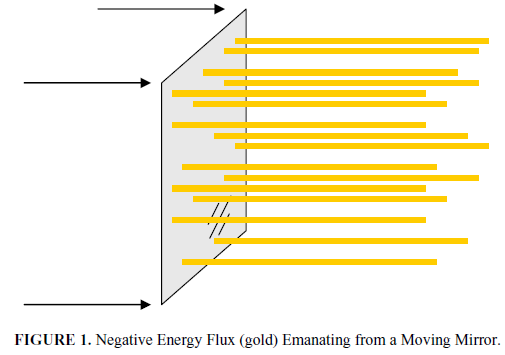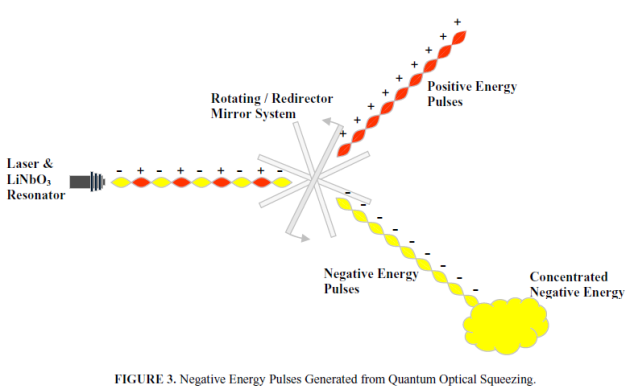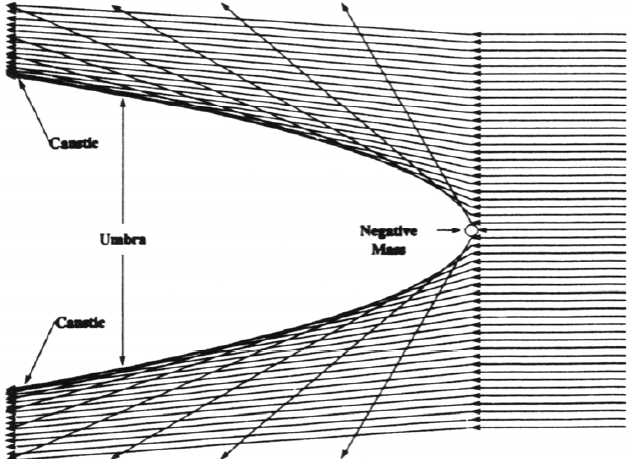What’s Wrong with NASA: Evidences of Life on Saturn’s Moon Enceladus?
March 30, 2012 8 Comments
By J.P. Skipper

Water jets( http://photojournal.jpl.nasa.gov/catalog/PIA11688)
This is my first report for what I suspect will be a landmark year 2012 in this field. Remember that by the end of this year (December) the old is suppose to come to an end and something new begins for Earth, at least as far as the ancient Mayan calendar and various prophets with decent track records are concerned. I can’t say for sure on that but during the meantime, just in case I’m going to get a little more speculative in some of my reporting where I think it is appropriate and it starts with this report.
The above 1st black and white image was taken by the Cassini spacecraft of the southern region of Saturn’s moon Enceladus that periodically sprays out jets or plumes of heated water that quickly freezes to ice in space as you see it doing here. Enceladus is a moon in Saturn’s rings. The current science thinking is that Saturn’s rings are made up of water ice and rock debris of all different sizes as well as a number of moons and dwarf planets held in orbit by huge Saturn’s tremendous gravity well.
The official thinking is that a comet of water ice plowed into Saturn’s orbit some time in the ancient past and, before busting up completely, it may have impacted one or more of Saturn’s moons and/or asteroids in that ancient time generating the rings full of rock debris and water ice held in orbit by Saturn’s tremendous gravity. Enceladus is only the sixth largest of Saturn’s moons with a diameter of 500 km or 310 miles and only 10% the size of the largest moon Titan.
Despite its smaller size, Enceladus is one of the brightest objects in our sky. The thinking on the reason for that is that Enceladus’ surface appears to be made up of a lot of water ice that is of course white in color and highly reflective in sunlight. It should be noted that this moon is located in the densest part of Saturn’s relatively diffuse “E” ring. There is speculation that Enceladus’ water ice outpouring is responsible for much of the density of the “E” ring. Do remember that piece of information because it will become increasingly more important in this reporting.
Note in the above 1st image that the main water jets or plumes appear to stretch in ragged lines of subtle brightness from the lighted edge areas of Enceladus back into the darker areas of the moon’s surface. This suggests that the strongest sprays do indeed come from fissures or cracks in the surface there in this southern region.
The official text in the NASA Photojournal notes that the above image is a mosaic created from two Cassini raw images. The current science thinking is that these are heated water/ice jets originating from deeper down below Enceladus’ surface spraying through fissures in the surface and then quickly freezing to ice in open space. Sounds reasonable doesn’t it.
Most of these fissures are located in the so called “Tiger Stripes” area at Enceladus’ south polar region. These tiger stripes are nothing more than visible fissures (cracks) and, as you can see, the above jet evidence in the darker area tends to support this theory. Now let’s take a closer look at these water venting fissure or tiger stripe sites in the next two images below.

Tiger stripe fissures in Southern pole( http://photojournal.jpl.nasa.gov/catalog/PIA06247)
The above 2nd image is a NASA Photojournal PIA06247 shot taken on 7/14/2005 of a large portion of Enceladus’ south polar region and the tiger stripe features area. The official text says that this image is 1,024 pixels wide and that the image scale is 122 meters or 400 feet per pixel. You do the math if you would like to arrive at the scale.
Meanwhile, please note that despite the wide area view, there are no impact craters in the above scene, only ridges, topography buckling, and fissures. Remember that Enceladus is in Saturn’s rings that might generate a bunch of rock missiles, so this tells us that this terrain is relatively young and fairly recently formed even if it isn’t currently jetting water. That suggests that this terrain is mostly water ice that forms into a self leveling liquid or semi-liquid frozen soil mixed mud and then refreezes back eventually into the newer terrain patterns you see here.
http://www.nasa.gov/mission_pages/cassini/multimedia/pia11127.html
The above 3rd image is a much closer Cassini PIA11127 shot taken on 10/31/2008 over 3 years later. It provides a closer view of the same type of topography in the south polar or tiger stripe region.
As you can see, this is some seriously rough topography but again no impact craters in it. In theory the largest fissures or canyons you see there are the source of water/ice jets. Remember now that the current prevailing science theory is that deeper underground water periodically heats up due to Saturn’s tremendous gravitational influence and expands upward and spewing out into space via the jets or plumes through these largest fissures where it quickly freezes into ice particles and becomes part of Saturn’s diffuse E-ring.
That science speculation tends to suggest that what we are looking at here in the 3rd image may be at least in part soil and rock geology over a subterranean water base and the largest fissures are the escape valves area for the heated rising water as it takes the path of least resistance upward through the largest deep fissures. Again the above 3rd image tends to support this theory. However, now take a look at next two images below and their newer 2010 evidence?

Waves radiating from many central points suggesting liquid surface( http://saturn.jpl.nasa.gov/photos/raw/rawimagedetails/index.cfm?imageID=228082)
The above 4th and 5th images are the best of their kind and based on the Cassini raw W00065512 image taken more recently on 9/22/2010 of Saturn’s moon Enceladus’ surface. The 4th image is of the general scene at 100% of the original and the 5th image is of the darker lower left quadrant of the general image blown up 200% of the original. The distance is suppose to be 248,565 km or 154,450 miles from the Cassini spacecraft to Enceladus here but it appears to me to be a whole lot closer than that. Further, there appears to have been some manipulation of this W00065512 image.
For example, the original official raw image strip the above 4th and 5th images are drawn from is physically taller and deeper down than the 4th and 5th images I am showing here. I’ve cropped out that bottom dark area because there is nothing in it to see other than dark blankness. One might think that it’s space but it isn’t, it’s just blank substitution.
Because of that, one might think that the W00065512 image view catches the outer edge of Enceladus but that isn’t the case either. I suspect something may have been there in the closer shot in the bottom area of the strip between Enceladus and the Cassini camera that has been removed by basically removing everything in that bottom area of the strip. In my imaging here I’ve left just a little of this at the bottom of both of the above 4th and 5th images for you to see.
Likewise, note the tiny bright specks in the bottom area of the above blown up 200% 5th image. Those bright specks are important. If you saw these bright specks against a dark space background (and you will see that in other images below) rather than against a small world, you would naturally assume that they are stars but most of them aren’t. The tip off is that all of these kind of “stars” are the same size and light intensity. In the case of the Cassini probe, such specks are for the most part residual empty pixels where something has been removed from the image. The proof is that when the image is blown up and enough contrast is added, a collection of image artifacts clustering around these specks revealing this truth can be seen. Tricky isn’t it.
I’m going to suggest that what we are looking at in the above 4th and 5th images is that rough Enceladus terrain in the 2nd and 3rd images being melted into a self leveling fluid soil nd water slurry mixture and each of those different size spots with apparent wave rings radiating out from the center of each one are bubbles of various sizes formed by heated water below rising to the surface in preparation of the next coming water jet event.
It’s similar to water just beginning to boil in a pot of soil and water mixture otherwise known as mud. Note that the fluid is not pouring out from fissures here but heating up from below and melting the entire surface area. This suggests that there may be no hard land surface here at all, just a water/soil mud like consistency on the surface just beginning in more advanced stages to do its water jet/plume thing shortly as would mud if over heated in a pot.
So we’ve learned something about Enceladus’ geology in that regard thanks to the Cassini imaging. However, let’s get back to those tiny bright specks that are in my opinion where some objects have been digitally extracted from the scene.
Note that they are between us and the Enceladus surface, so they can’t be claimed to be stars in space, although they could be claimed to be reflective rocks or ice masses within Saturn’s rings. If so, then why would someone go to all the trouble and expense to remove evidence that isn’t really anomalous? I suspect and speculate that this actually closer view of the Enceladus surface was included in the official record to record this very important and informative geological jetting event starting to unfold for the scientists. However, in doing so, the closer view also revealed objects on a closer larger scale between Enceladus and the Cassini camera with enough resolution to reveal what they may really be and that it is LIFE.
Objects that someone doesn’t want us or the scientists in general and especially those involved in the Cassini mission to know about. No I’m not talking about space ship objects here, it is actually more incredible than that. What I am talking about is biological life itself. Biological life that can live in space but which often remains within range of these Enceladus jetting events and/or within at least the “E” ring of Saturn and its diffuse E-ring water ice resource.
Life that can gather and retain water ice within itself in the rings both as a resource in supporting organic life and to provide self generated power for that life. Further, it also shares some similarities to the bioluminescence organism life in the deepest darkest part of our Earth oceans where bioluminescence in the intense darkness comes in very handy. An adaptation that it shares for the same reasons in the blackness of space. In other words, where there is a need, life often finds a way.
I suspect it is herding or more appropriately schooling space life that is beginning to congregate above and getting ready to take advantage of the upcoming Enceladus water jet resource event shown just beginning to form in the 4th and 5th images here. Life such as that in the following images.
I suspect the only reason that this W00065512 image made it into the official record is because it is geologically important as to the water jets and because cropping off the bottom of the image did away with views too close of denser and more recognizable concentrations of this life against the Enceladus background and the few objects still left in the image shown could be removed individually without drawing much attention to this obfuscation tactic.

OBJECTS AT REST SOME DISPLAYING BIOLUMINESCENCE(http://saturn.jpl.nasa.gov/photos/raw/rawimagedetails/index.cfm?imageID=228614)

objects having reversed orientation(http://saturn.jpl.nasa.gov/photos/raw/rawimagedetails/index.cfm?imageID=228613)
The above 6th and 7th images are two separate Cassini N00164016 and N00164015 raw images, both taken on 10/4/2010, that demonstrates these objects against against a space background. Although they are from two separate images, note that one is closer than the other. Also note that they are both of the same scene but with subtle differences. For example, note that the orientation of the objects is the reverse of each other and there has also been some subtle changes changes in the background.
Please also note that this change in orientation is not the result of a flipping of the image, only a change limited to the object’s and their orientation. All of these factors combine as evidence strongly suggesting that these objects are real and not imaging artifacts of any kind. Now note in this 7th image the closer view all those “stars” in the background. Note how many there are and their general uniformity in size and light intensity quite contrary to natural stars that would be of different sizes and intensity.
Not quite all but most of this evidence is not stars at all but the empty pixels where something has been extracted from the image during processing. Now if that is true, think now many there are of what ever has been removed from this scene. Despite their more distant appearance due to their smaller size, I suspect that these empty pixels represent closer to the camera views of these same objects that might have provided a stronger recognition factor raising the suspicion even among conformity influenced scientists that they may be looking at life here and opening that door in their thinking.
However, there are yet other factors to consider. For example, note the uniformity of size and length of the objects that we can still see here even after the obfuscation work. This level of uniformity is typical of life all deriving from the same genetic code building blocks. At the same time, this is not typical of rock and soil or ice mass geology in Saturn’s rings. For example, it is well known that the rings are made up of particles from the size of mere specks to the size of large homes and larger. That kind of variance is not represented here in these anomalous bright objects.
Water is without a doubt the enabling factor here both in the form of liquid and ice. Consider this, water is a combination of H20. Both hydrogen and oxygen individually or together can be used as sources of power not to mention constituting the body fluids of living tissue. It is within the realm of reason that some life forms originating in a water environment originally could over time evolve and develop into self propelling their way via expenditure of that power in nearby space and through out Saturn’s rings harvesting water ice in the thinner material as they go and those within range returning to these great Enceladus liquid water jetting events cruising through the water plumes to take on larger more satisfying loads.
It is also within reason that such creatures starting out life in water depths without sunlight and in complete darkness under an mud top surface frozen cover would likely develop bioluminescence in order to communicate with others of its kind, find mates, compensate for freezing space conditions, and deal with predators just as we see in the deepest darkest parts of our Earth oceans. As they evolve to live out of the water, they just exchange one form of swimming for another.
The above 8th image is drawn from yet another Cassini N00163969 raw image. I’ve included it here just so that you can see more evidence of the objects against a space only background and to demonstrate that this kind of evidence is typical in the Cassini imaging near Enceladus and within Saturn’s rings. Note once again the objects and their different light producing effect from object to object. Note also the great many “stars” in the background that, if they are life extracted from the scene, may be evidence of immense schools of these creatures and just how numerous they really are in “empty” space.

Image artifacts clustering around specks(http://saturn.jpl.nasa.gov/photos/raw/rawimagedetails/index.cfm?imageID=228567)
The above 9th image is just a section of the 8th image blown up 400% to demonstrate the “stars” in the background. Although you can also see the dimmer always present noise artifacts in this background, note how the brighter “artifacts” cluster around the “stars” that are actually empty pixels left behind when something was extracted from the image at these many points. Now look back at the 7th, 8th and 9th (below) images and think about how numerous these are. This is what happens when a location in a digital image is disturbed by subsequent spot specific manipulation.
The above 10th image evidence is drawn from yet another Cassini N00163126 raw image. I believe that it demonstrates the objects straightened out and underway all in the same direction like a school of fish. Again, note that some are generating an inner light source and some are not. I believe that objects with a slight curve to them represents objects generally at rest even though they may or may not be completely stopped.
I suspect that objects straightened out as you see above indicates exerting power and underway. This factor implies that these objects are likely organic in their composition so typical of life. It also implies that they can change their shape to some extent.

objects-in-jet(http://photojournal.jpl.nasa.gov/catalog/PIA07759)
The above final 11th image is a scene taken of Enceladus during a water jet event backlit by the Sun. It demonstrates a couple of things. First, it demonstrates the full extent of expansion into space of the water geyser event from the south polar region not adequately shown by the raw black and white imaging and just how extensive a deal it really is. Second, it shows the objects pointed out with the yellow arrows. Note that all of these are straightened out and likely underway going through this water plume event tending to back up my own speculations.
I know that all of this is a lot for some of you to take in including even some of you with more open minds. After all, how can something alive exist in the emptiness even vacuum of space?
The fact is that I first brought this possibility to you attention in my 2009 Report #170 because of the visual evidence. If this is truly life, then its behavior suggests an aquatic schooling origin like schooling fish and Enceladus may even be its ancestral home. Some of the visual evidence suggests even more complexity in that this life may be a cooperative schooling form that can also join with others of its kind cooperatively and change its over all visual appearance in the process.
Life in space, despite the human preconception against it, is not a new way out idea. For example, there is NASA’s own STS-75 The Tether incident where an electro dynamic tether to generate power in space experiment was deployed in space where nothing by conventional thinking should be able to live. Yet the tether broke off via an unexpected power surge and still producing power began to be surrounded by swarming “some things” that clearly appeared to be disc shaped living objects.
You could tell that the astronauts were stunned and initially at a loss for words just watching the swarming. When mission ground control broke in and asked what these things were, the reporting astronaut tried to pass it off as debris coming off of the spacecraft even though these large objects were at least 77 miles away and in movement behind the tether from the spacecraft camera. In other words, the objects were likely bigger than the spacecraft itself and could not possibly be “debris.”
In my opinion, the only thing that is hard to believe about this incident is the completely foolish human explanation with more obvious holes in it than a big hunk of swiss cheese. If the tether principle was really abandoned by NASA, it is more likely because its radiating power attracted too many life forms feeding on that power with unknown consequences.
Some and especially the most innocent scientists will no doubt scoff at this as the most ridiculous kind of speculation pointing out that the great majority of the science communities would love to make scientific history by discovering life on other worlds including even in space and that there is no chance that they would deny it to public consumption. Further, I would even agree with most of that in general.
However, what they are failing in their naivety to take into consideration is that space, UFOs, and alien research and exploration is also big business here on Earth building vast fortunes empowering those that have ascended to oligarchy world control status. They police their own and to fall from such exalted heights is too much of a horror for them to contemplate. Most in government and science are but mere employees of oligarchy choosing. Worse, they own all the most important communication pathways like the major media and they in a round about way control most of the military including military and civilian intelligence communities.
For example, if someone under their influence (and who isn’t) gets hold of an alien craft as crap happens for aliens just as it does for us. The technological gains that are its potential equates directly to world wide military advantage, money, and power. The same if someone under their influence gets hold of an alien or aliens or just negotiates in secret with them. For them, it’s all about wealth, power, and control and everything to that end is expedient.
As they see it, the double edge of the sword is that on one edge aliens and their advanced technology exists with its power potential drawing them with their focus on self like mindless flies to honey. Yet, on the other edge, is the potential for interference from populations that tend to be more idealistic and want to argue about right and wrong for all concerned. What the science community doesn’t seem to understand is that idealism and altruism are regarded by oligarchy as completely unrealistic and foolish and a waste of their time.
What the oligarchy knows is that admitting to any kind of life beyond the confines of Earth or for that matter intelligent alien life here on Earth, leads to an opening of the mind and what it will consider next. It’s like you can’t be just a little bit pregnant, you either are or you aren’t. Right now denial among populations and the science communities is the norm and the oligarchy has worked long and hard at considerable expense to create this prevalent social condition. They don’t want to abandon it because it will ultimately mean interference with what they do within the protection of secrecy as too many others not under their control start to become involved.
Yet, the very technology advantage that has been such a primary mover in making them, is also undermining them. As greater and greater communication among populations advances, the secrecy that shields the oligarchy is also undermined and is looking at collapse. Their own AI super computer modeling, assuming they are feeding it objective material, without a doubt predicts this. We out here in the populations are right on the cusp of this happening in our time.
So Mr. scientist they are running scared and they will try to prevent as long as possible that knowledge door from opening within you and you beginning to wake up. Meanwhile they are trying to figure out a way to survive what is coming and preserve their exalted positions of power. So they keep you and your work confined and compartmentalized so that you can’t see the true big picture. For the few that this doesn’t work on, they create a false big picture for you to focus on while the real picture remains solely out of your sight and within their control.
The bottom line is that their proven success formula historically requires secrecy as well as your and our ignorance. Unless they can develop a different successful formula that they can be willing to try in their self isolation, they can’t afford for you or I to wake up and open the door to idealistic interference problems for them. The trouble from their point of view is that the admission of water in what we would consider normal conditions on the surface of a world leads to the consideration of biological life on that surface and that in turn of course leads to the consideration of intelligent and even advanced life and of course we aren’t ignorant and in their control any more.
I know that many of you on all sides don’t want to face this but we’re now long past the point of no return and it’s too late to clamp down or turn back the tide now. The collapse of most of this particular brand of secrecy on our world is immanent and the general science and population ignorance so long entrenched is going to fall away with it. The level of technological advancement guarantees it. The key is to adapt now or suffer the consequences.
Joseph P. Skipper
















.jpg)
.jpg)
.jpg)
















































